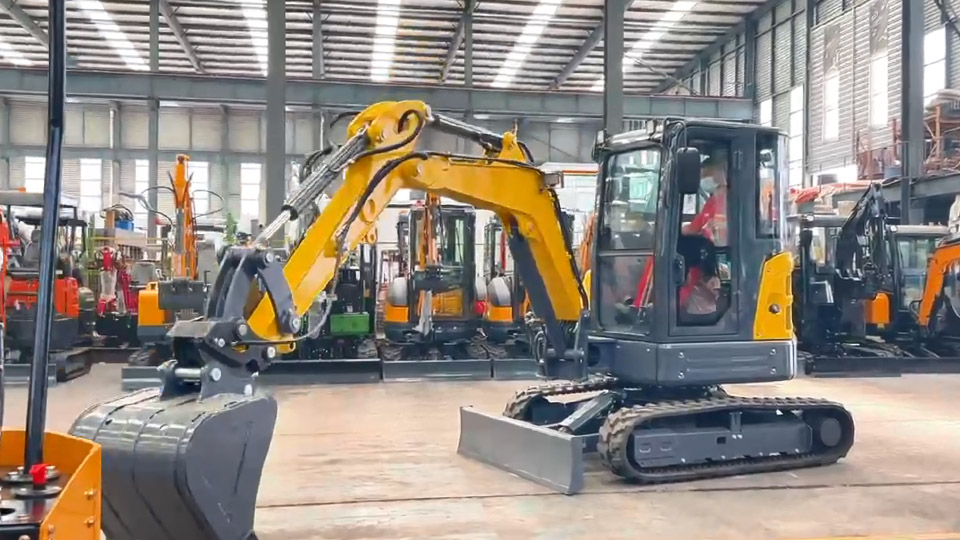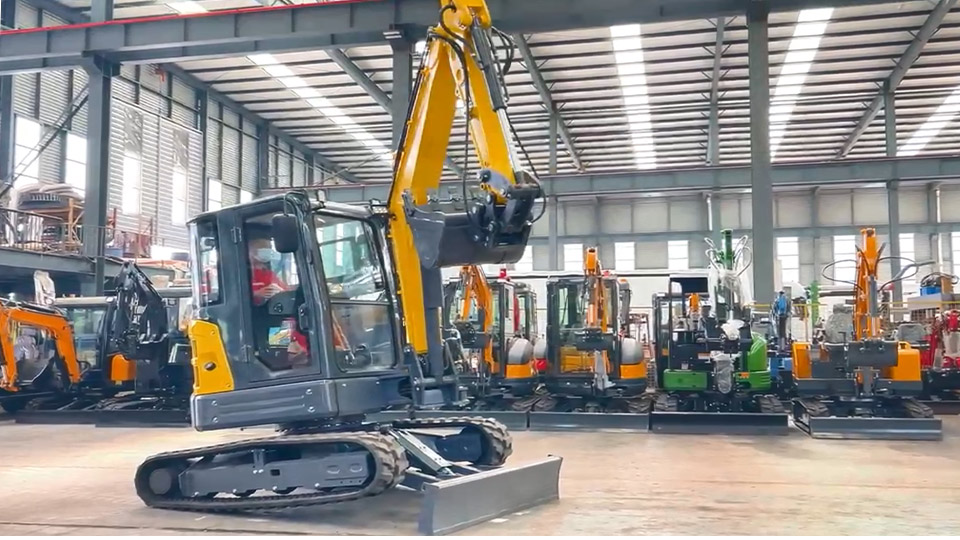Step-by-Step: The Definitive Guide to Operating an Excavator Safely
Excavators are powerful and versatile machines capable of performing a wide array of tasks, from digging and trenching to demolition and material handling. However, their size, weight, and operational capabilities also present significant safety hazards if not handled with utmost care and adherence to strict procedures. This comprehensive, step-by-step guide outlines the essential practices for operating an excavator safely, emphasizing pre-operation checks, proper operating techniques, and post-operation procedures to minimize risks and ensure a safe working environment.
Phase 1: Pre-Operation Checks – Laying the Foundation for Safety
Before even starting the engine, a thorough pre-operation inspection is paramount. This proactive approach can identify potential issues that could lead to equipment failure, accidents, and injuries.
Step 1: Review the Operator's Manual and Site Safety Plan:
Operator's Manual: This document contains crucial information specific to the make and model of the excavator, including operating procedures, maintenance schedules, safety warnings, and load charts. Familiarize yourself with its contents before operating the machine.
Site Safety Plan: Understand the specific safety protocols and procedures for the job site, including designated work areas, potential hazards (underground utilities, overhead power lines, unstable ground), traffic management, and emergency procedures. Attend all safety briefings.
Step 2: Conduct a Walk-Around Inspection:
Carefully inspect the entire excavator for any signs of damage, leaks, or loose components. Pay close attention to the following:
Undercarriage (Tracks or Wheels): Check for loose or damaged tracks/tires, missing or damaged rollers/idlers, proper track tension, and any accumulation of debris.
Hydraulic System: Inspect hydraulic hoses and fittings for leaks, cracks, or wear. Ensure hydraulic cylinders are not damaged and that all connections are secure. Check the hydraulic fluid level.
Engine Compartment: Check engine oil, coolant, and fuel levels. Inspect for any leaks or unusual noises. Ensure the battery terminals are clean and secure.
Operator Cab: Ensure the cab is clean and free of obstructions. Check the condition of the seatbelt and adjust it properly. Verify the functionality of all controls (levers, pedals, switches), including the horn, lights, and windshield wipers. Ensure mirrors are clean and properly adjusted. Check the fire extinguisher is present and charged.
Boom, Arm, and Bucket: Inspect for cracks, bends, or damage. Check the condition of the bucket teeth or cutting edge, and ensure all pins and locking mechanisms are secure.
Quick Coupler (if equipped): Verify that the quick coupler is functioning correctly and that any attached implement is securely locked.

Safety Devices: Confirm the functionality of all safety devices, such as rollover protective structure (ROPS), falling object protective structure (FOPS), and any warning alarms.
Step 3: Check Fluid Levels:
Hydraulic Fluid: Ensure the level is within the recommended range. Low fluid can cause system malfunctions, while overfilling can lead to leaks and overheating.
Engine Oil: Check the dipstick to ensure the oil level is adequate.
Coolant: Verify the coolant level in the radiator or expansion tank.
Fuel: Ensure there is sufficient fuel for the planned work.
Step 4: Test Controls Before Operation:
Start the Engine: Follow the manufacturer's recommended starting procedure.
Hydraulic Controls: Slowly and cautiously test all hydraulic controls (boom lift/lower, arm in/out, bucket curl/dump, swing left/right) to ensure they are responsive and operating smoothly. Listen for any unusual noises.
Travel Controls: If the excavator is track-mounted, test the forward and reverse movement of each track independently and together. If wheel-mounted, test forward, reverse, and steering. Ensure the brakes are functioning correctly.
Auxiliary Hydraulics (if applicable): If using an attachment that requires auxiliary hydraulics (e.g., hammer, grapple), test the functionality of those controls.
Safety Systems: Test the horn and any warning lights.
Step 5: Assess the Work Area:
Ground Conditions: Evaluate the stability of the ground where the excavator will be operating. Avoid working on excessively sloped, soft, or unstable terrain that could lead to tipping.
Overhead Obstructions: Identify and be aware of any overhead power lines, trees, or structures that could pose a collision hazard. Maintain the minimum safe clearance from power lines as specified by regulations.
Underground Utilities: Before digging, always check for the presence of underground utilities (gas lines, water lines, electrical cables, fiber optic cables). Contact the local utility companies or use a "Call Before You Dig" service to locate and mark these lines.
Personnel and Obstacles: Ensure the work area is clear of unauthorized personnel, vehicles, and other obstructions. Establish and maintain safe working distances. Use spotters if visibility is limited.
Swing Radius: Be constantly aware of the excavator's swing radius and ensure that no personnel or obstacles are within this zone.
Phase 2: Safe Operating Techniques – Precision and Awareness in Action
Once the pre-operation checks are complete and the work area is deemed safe, focus on operating the excavator with precision and constant awareness.
Step 6: Proper Entry and Egress:
Always use the designated steps and handholds when entering and exiting the excavator cab.
Maintain three points of contact (two hands and one foot, or two feet and one hand) at all times.

Never jump on or off the machine.
Step 7: Seatbelt Usage and Adjustments:
Always wear the seatbelt properly fastened whenever operating the excavator.
Adjust the seat and controls to ensure comfortable and ergonomic operation, allowing for full range of motion and clear visibility.
Step 8: Smooth and Controlled Movements:
Operate the controls smoothly and avoid abrupt or jerky movements, which can destabilize the machine and increase the risk of accidents.
Coordinate the movements of the boom, arm, bucket, and swing to perform tasks efficiently and safely.
Step 9: Maintaining Stability:
Keep the excavator on level ground whenever possible. When working on slopes, operate with caution and follow the manufacturer's recommendations for maximum allowable grades.
Be aware of the machine's center of gravity and avoid swinging heavy loads downhill or across steep slopes.
When lifting heavy objects, ensure the load is within the excavator's lifting capacity for the given reach and configuration (refer to the load chart). Lift and lower loads slowly and smoothly.
Avoid sudden stops or starts, especially when carrying a load.
Step 10: Digging and Trenching Safely:
Dig in a controlled manner, ensuring the trench walls are stable. Follow OSHA regulations for trench safety, including sloping, shoring, or shielding as required.
Be aware of the potential for cave-ins and never enter an unprotected trench.
Keep the bucket and other attachments away from the operator cab and other parts of the machine.
Step 11: Lifting and Material Handling Safely:
Use the appropriate lifting attachments (e.g., lifting hooks, slings) and ensure they are in good condition and properly rated for the load.
Never exceed the excavator's rated lifting capacity.
Keep the load close to the machine's center of gravity for maximum stability.
Avoid swinging loads over personnel.
Use taglines to control the movement of suspended loads.
Step 12: Awareness of Surroundings:
Maintain constant awareness of your surroundings, including the location of personnel, other equipment, and potential hazards.
Use mirrors and backup alarms effectively. If visibility is limited, use a spotter who is in clear communication with the operator.
Be aware of blind spots and take extra caution when swinging or moving the machine.
Step 13: Communication:
Establish clear communication signals with ground personnel before starting any operation.
Use hand signals or two-way radios as agreed upon in the site safety plan.
Phase 3: Post-Operation Procedures – Securing the Machine and the Site
Once the work is complete, proper shutdown and securing of the excavator are essential for preventing unauthorized use, damage, and accidents.
Step 14: Park the Excavator Safely:
Park the excavator on level, firm ground, away from any potential hazards (e.g., edges of excavations, unstable slopes).
Lower the boom, arm, and bucket to the ground.
Engage the parking brake or wheel chocks (for wheeled excavators).
Step 15: Shut Down the Engine:
Follow the manufacturer's recommended shutdown procedure. Typically, this involves allowing the engine to idle for a short period to cool down before turning off the ignition.
Step 16: Secure the Controls:
Engage any control locks or safety levers to prevent accidental operation.
Step 17: Perform a Post-Operation Inspection:
Briefly inspect the excavator for any new damage or leaks that may have occurred during operation. Report any issues to the appropriate personnel.
Step 18: Clean the Machine:
Remove any excessive dirt, mud, or debris from the tracks, undercarriage, and operator cab. This helps prevent buildup that can hinder performance and make future inspections more difficult.
Step 19: Secure Attachments:
If leaving an attachment connected, ensure it is securely resting on the ground or properly supported. If disconnecting an attachment, follow the correct procedure for releasing the quick coupler and store the attachment in a safe and stable location.
Step 20: Secure the Cab:
Close and lock the operator cab to prevent unauthorized access and protect the controls from the elements.
Step 21: Report Any Issues:
Immediately report any mechanical problems, damage, or safety concerns to the supervisor or maintenance personnel. Do not operate a faulty machine.
Continuous Improvement: Ongoing Training and Awareness
Safe excavator operation is not a one-time learning process but an ongoing commitment. Regular refresher training, toolbox talks on specific safety topics, and a proactive safety culture are crucial for maintaining a safe working environment. Operators should always remain vigilant, prioritize safety over speed, and never hesitate to stop work if they identify a potential hazard. By adhering to these step-by-step guidelines and fostering a strong safety mindset, the power and versatility of excavators can be harnessed effectively and responsibly.
Post time:Sep-25-2020
